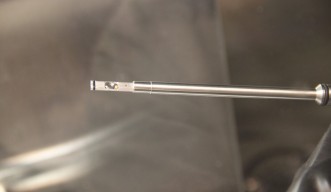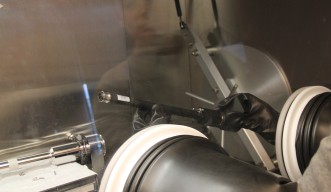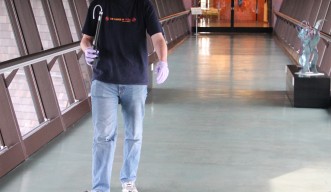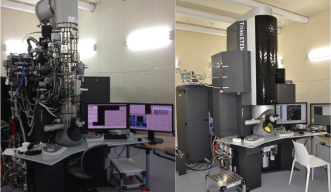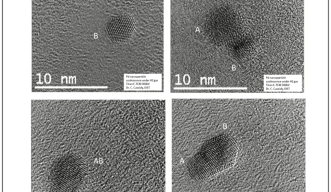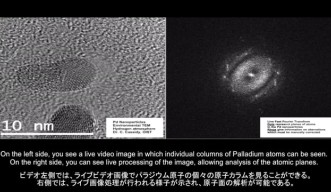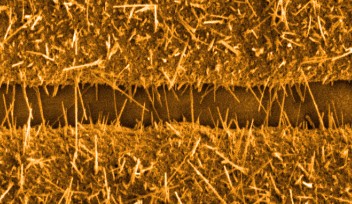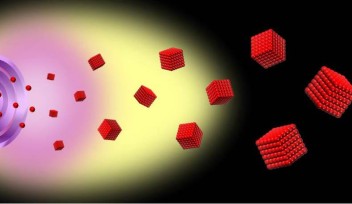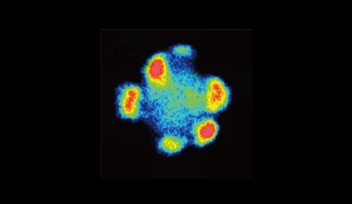A Day in the Life of a Nanoparticle
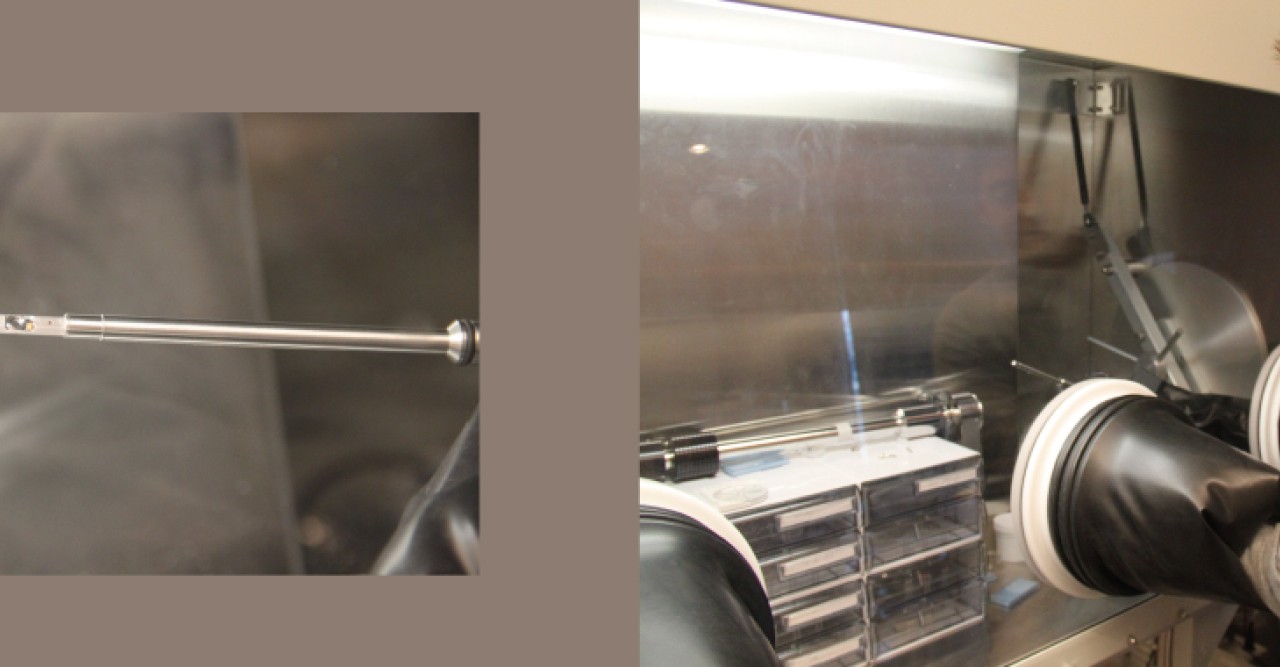
Mukhles Sowwan’s Nanoparticles by Design Unit does just what the name suggests; it designs custom nanoparticles. However, creating nanoparticles is only the beginning of the work. Once they are synthesized, their properties must be analyzed. Dr. Cathal Cassidy, a group leader in the unit, analyzes the nanoparticles by looking at them under a microscope, an extremely powerful and sensitive microscope. He uses a Transmission Electron Microscope (TEM) with custom-designed specialized capabilities. Before he can use this microscope, he first has to transport his nanoparticles, objects that are one million times smaller than a grain of sand, from the top floor of Lab 2, across the Skywalk, through the Center Building, and down to Lab 1 without exposing them to air during a brisk 5-minute walk.
Due to the small size and highly reactive nature of nanoparticles, transporting them is a lot more complicated than simply picking one up and walking it over. The nanoparticles are deposited onto a tiny membrane that is 3 nanometers thick and about 3 millimeters across, or half the diameter of a pencil. Once they are on the membrane, the membrane is transferred to a ‘glove box’, a machine that allows the researchers to work with their nanoparticles in an inert, oxygen-free environment. The nanoparticles on the membrane are painstakingly inserted into a special holder and doubly sealed, ensuring the internal environment of the tiny holder remains clean, devoid of all oxygen and moisture during transport.
Once the nanoparticles are loaded into the holder, Dr. Cassidy begins the long walk across the Skywalk from Lab 2 to Lab 1, avoiding going outside as an extra precaution because of Okinawa’s high humidity. He says, “I do this walk often 10 times a day or more, but I don’t mind since it helps keep me fit. I’m looking forward to the completion of Lab 3, to give me some variety in my choice of route.”
Upon arriving at the TEM, the real fun begins. Dr. Cassidy loads the nanoparticles into the TEM, where he can analyze them in ways that few in the world have the capability of doing. This TEM has extremely high resolution, 0.9 Angstroms, meaning you can visualize individual atoms. In addition, it also has a custom-designed gas delivery system designed by Dr. Cassidy and members of the Nanoparticles by Design Unit, and built onto the TEM under the guidance of Dr. Kazuma Takada of the Facilities Operation and Use Section. The gas delivery system allows the researchers to watch their nanoparticles interact in real time with different gases.
Dr. Cassidy spent the better part of the last year setting up this extremely powerful system for a reason. He wants to understand the properties of various materials, and be able to watch, at an atomic level, how materials react with gases or change in different conditions. Dr. Cassidy wants to focus on hydrogen storage for use in hydrogen fuel cells. Hydrogen is highly reactive, and the materials currently used to store it pose problems because it is difficult to get the hydrogen into and out of the material, and the storage material breaks down over time. He says, “using the gas delivery system in our TEM, we can watch the absorption and desorption of hydrogen in different materials happen live and really figure out what’s going on within the material.”
Dr. Cassidy and the Sowwan Unit are excited about this new technology they have helped bring to OIST. They are looking forward to future collaborations with other units, some of which have already begun. Due to Dr. Cassidy’s expertise in materials science and the great support for researchers here, OIST now has one of the most powerful Environmental TEMs in the world.
By: Kathleen Estes
Specialties
For press enquiries:
Press Inquiry Form











